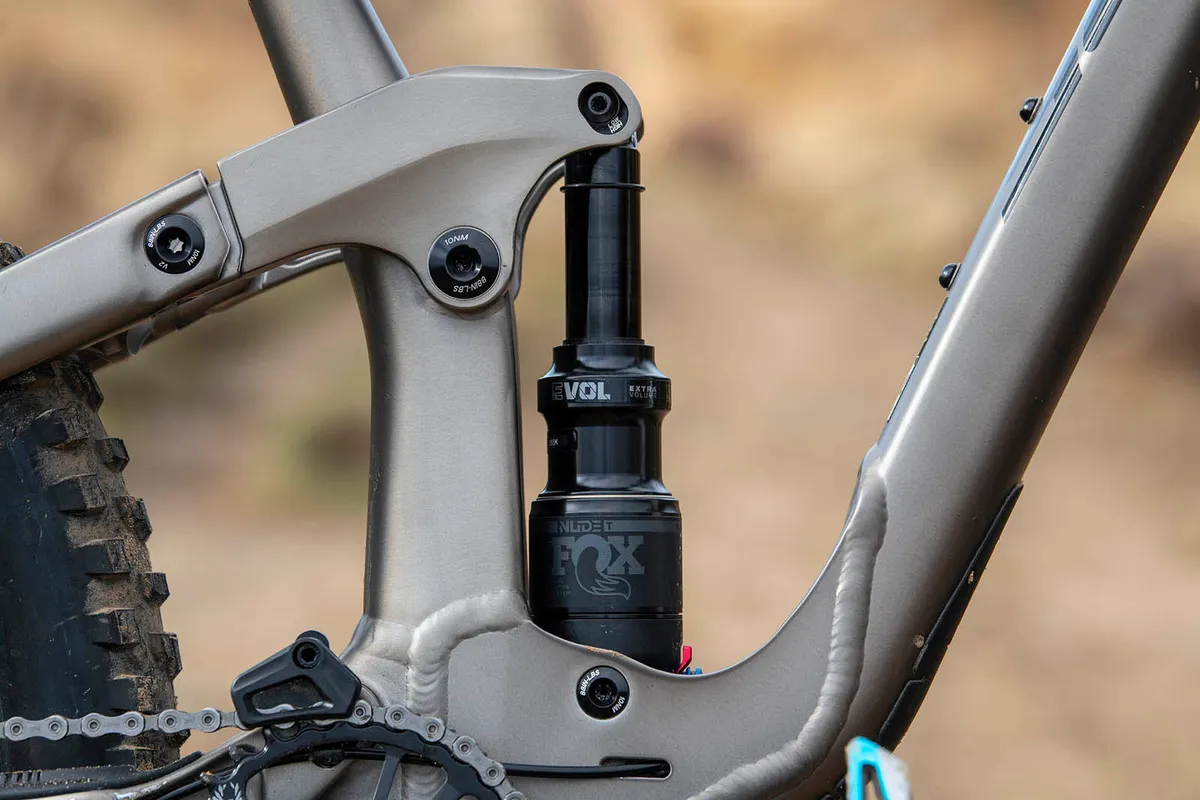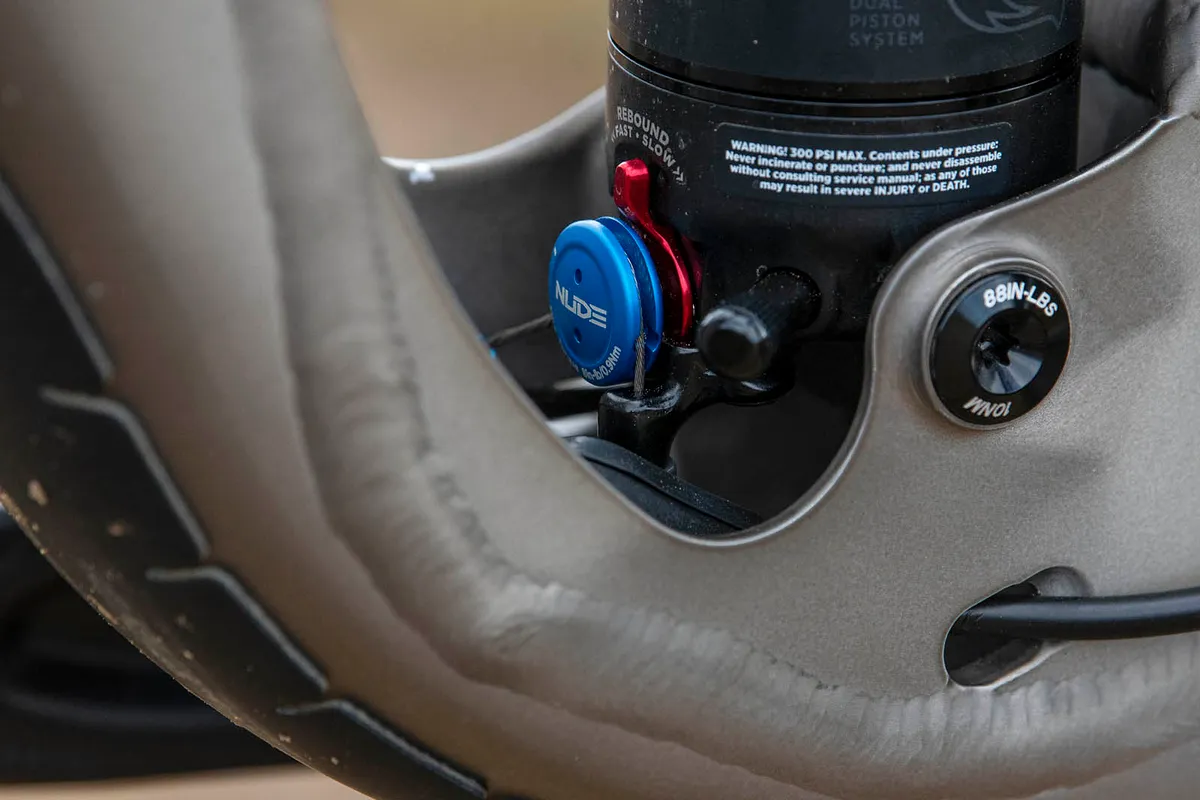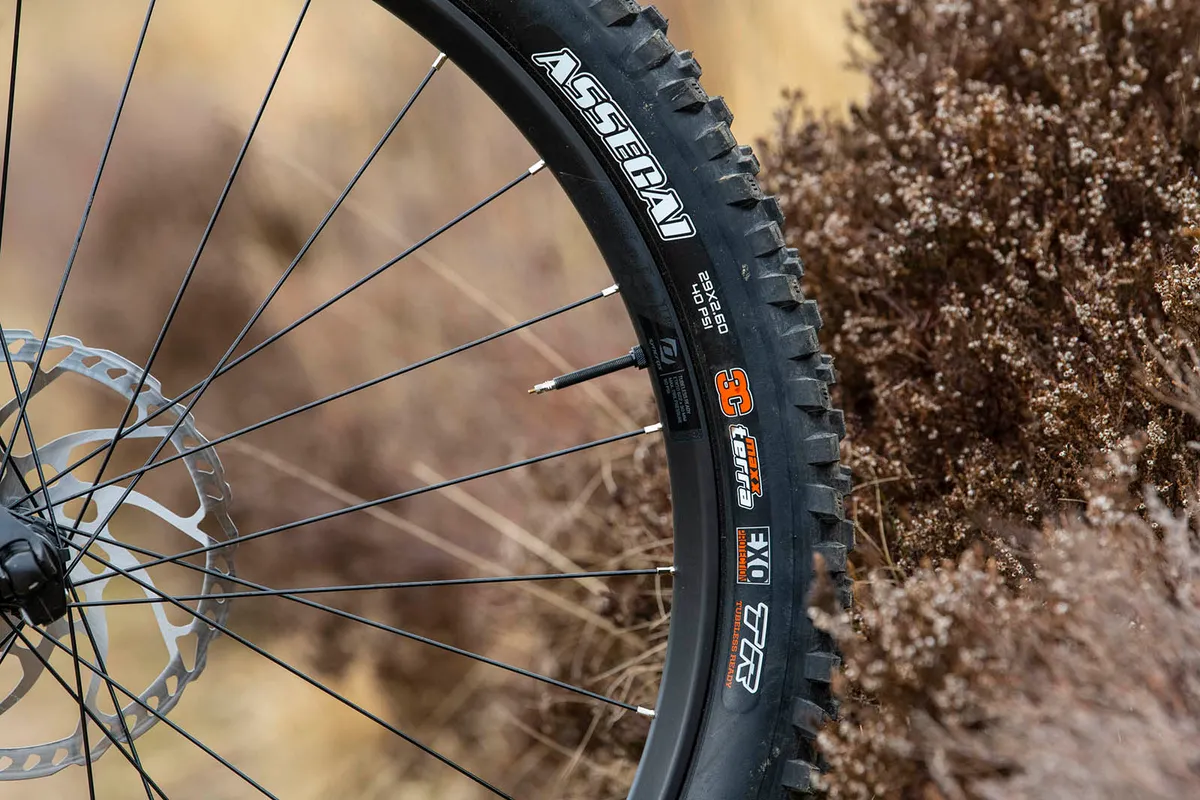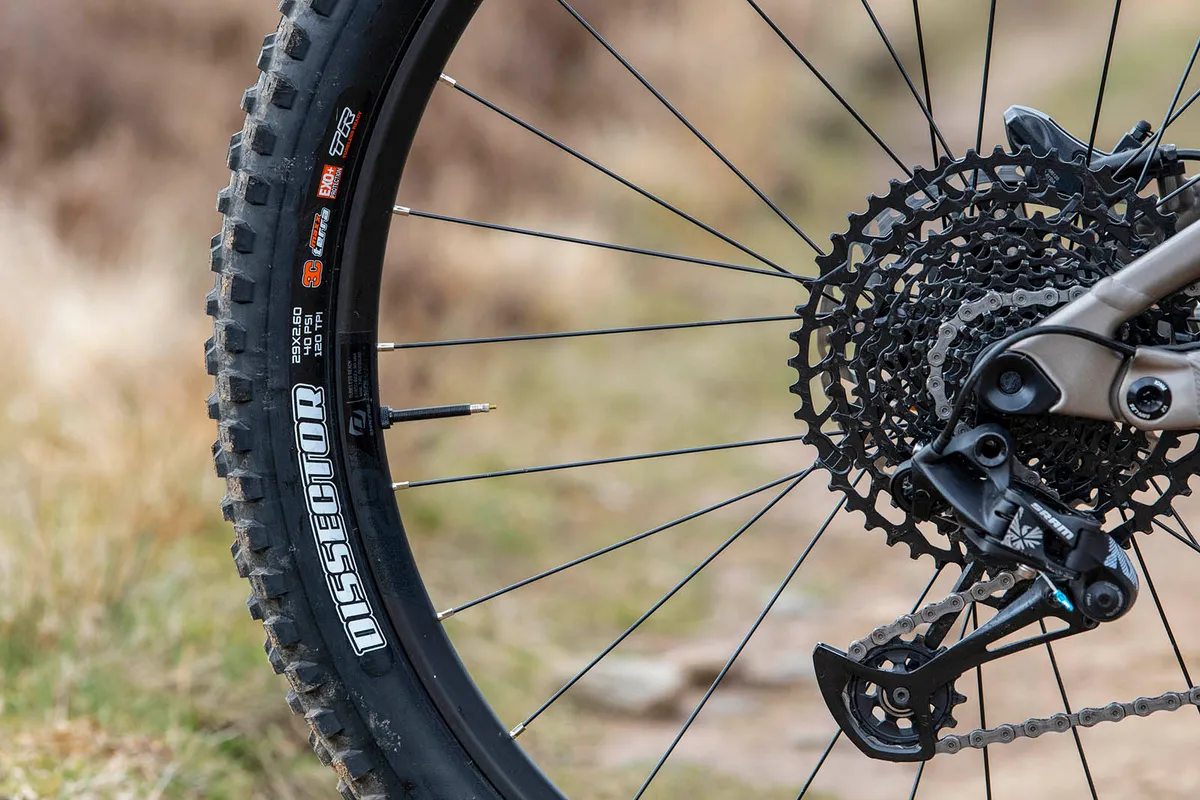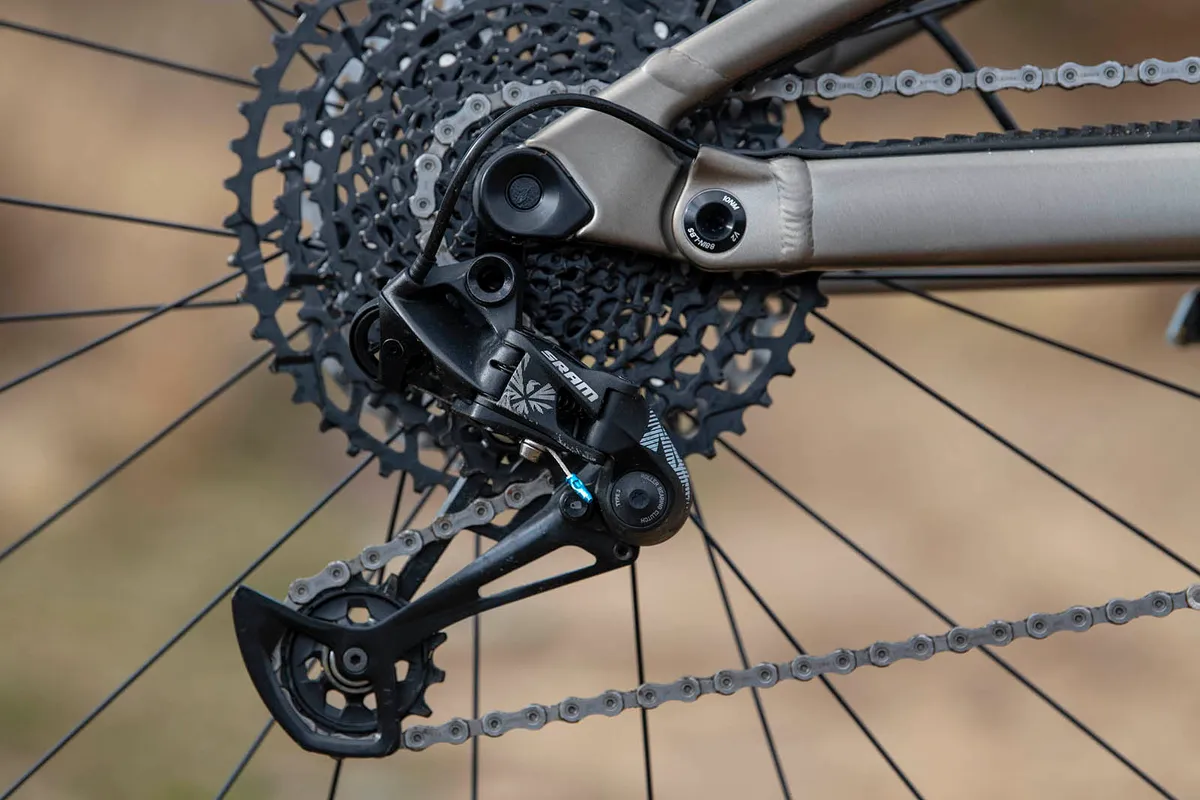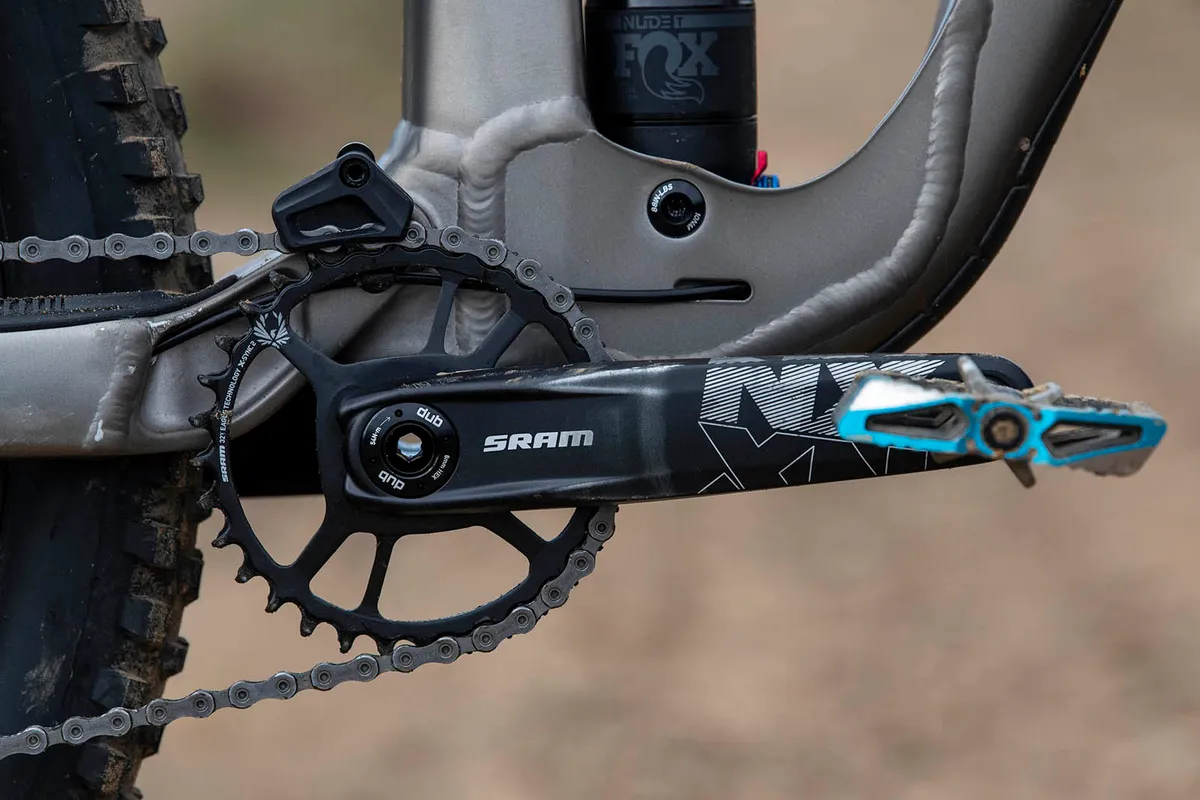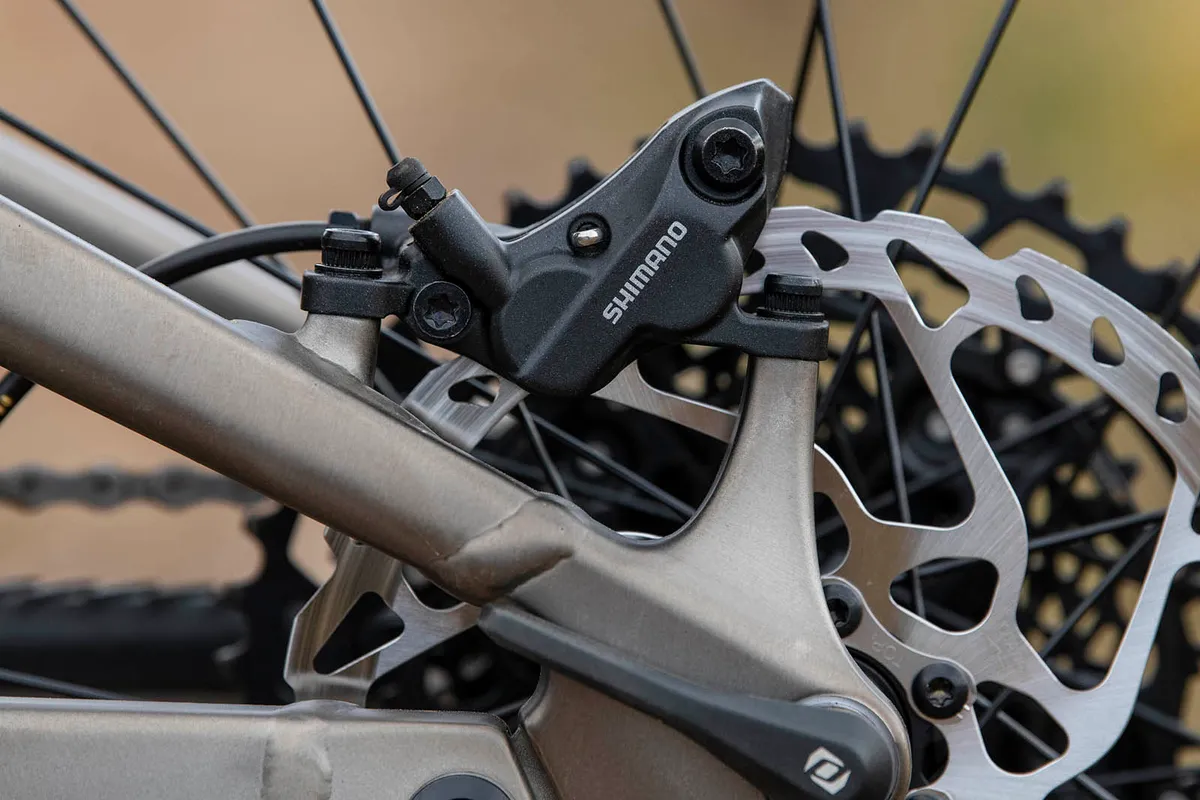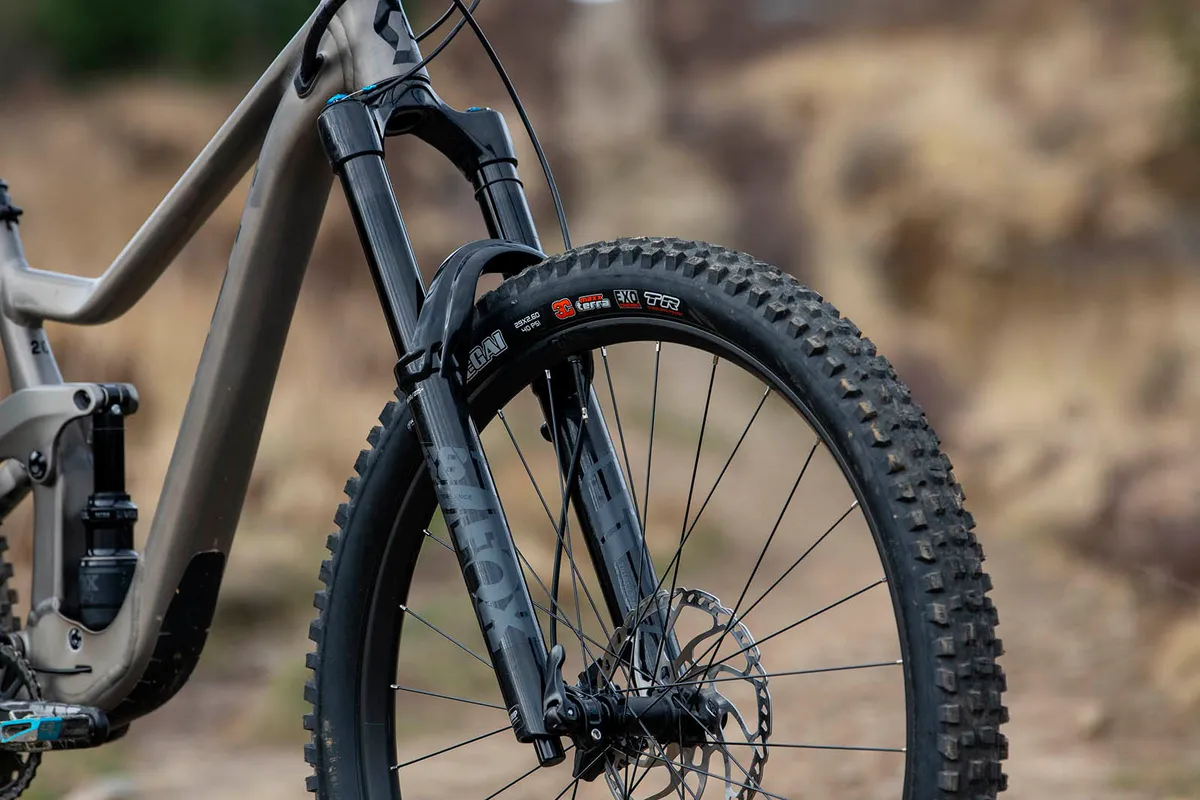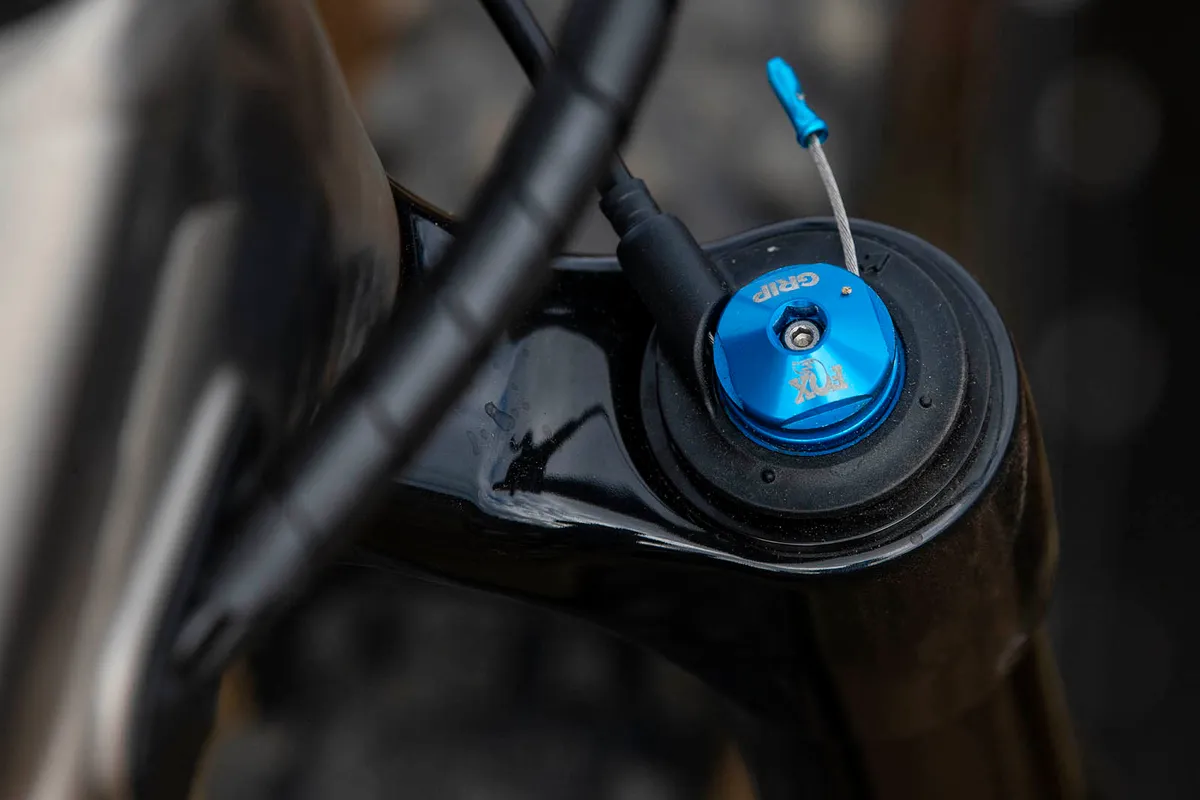Scott’s current version of the Ransom has been on the market since 2018 and was, for some time, one of the longest travel enduro bikes on the market.
The 2021 Ransom continues to use Scott’s proprietary travel changing TwinLoc system and has had its spec updated in a bid to compete with the best in the enduro category. But just how well will it hold up or is it time for Scott to give it a bit of a makeover?
Scott Ransom 920 frame and suspension details
The alloy Ransom frame offers up a substantial 170mm of rear-wheel travel (and is designed to use a 170mm travel fork up front). Unlike its competitors, though, this travel can be effectively altered via a bar-mounted remote, which is attached to both the shock and the fork.
This is known as Scott’s TwinLoc system. The remote itself consists of two levers that sit under the left-hand side of the handlebar where the dropper post remote would normally sit.
This arrangement used to result in the dropper post remote having to sit above the bar, making it rather awkward to reach. Thankfully, Scott now provides a vertically mounted dropper post remote that doubles up as the lockring for the grip.
The TwinLoc system offers riders three different modes to choose from: ‘Descend’ which is fully open; ‘Traction’ which effectively limits the back end of the bike to just 120mm of travel and helps to prop the back of the bike up, better maintaining a steeper effective seat angle; and ‘Lockout’ which locks out the fork.
Scott continues to use the ‘Virtual 4 Link’ suspension system – a four-bar linkage design – to control how the 170mm of rear-wheel travel is delivered. Attempting to tame that travel is a Fox NUDE T shock which sits upside down in the frame compared to how many manufacturers mount their shocks.
Unlike the pricier versions of the Ransom, the 920 doesn’t get the custom ‘Ramp Adjust’ lever which sits on the main body of the shock and lets you easily toggle between the linear or more progressive mode, which is a bit of a shame considering the asking price here.
The internal cable routing helps to keep the Ransom’s lines looking clean and clutter-free and, in the flesh, makes it one of the best-looking bikes on the market.
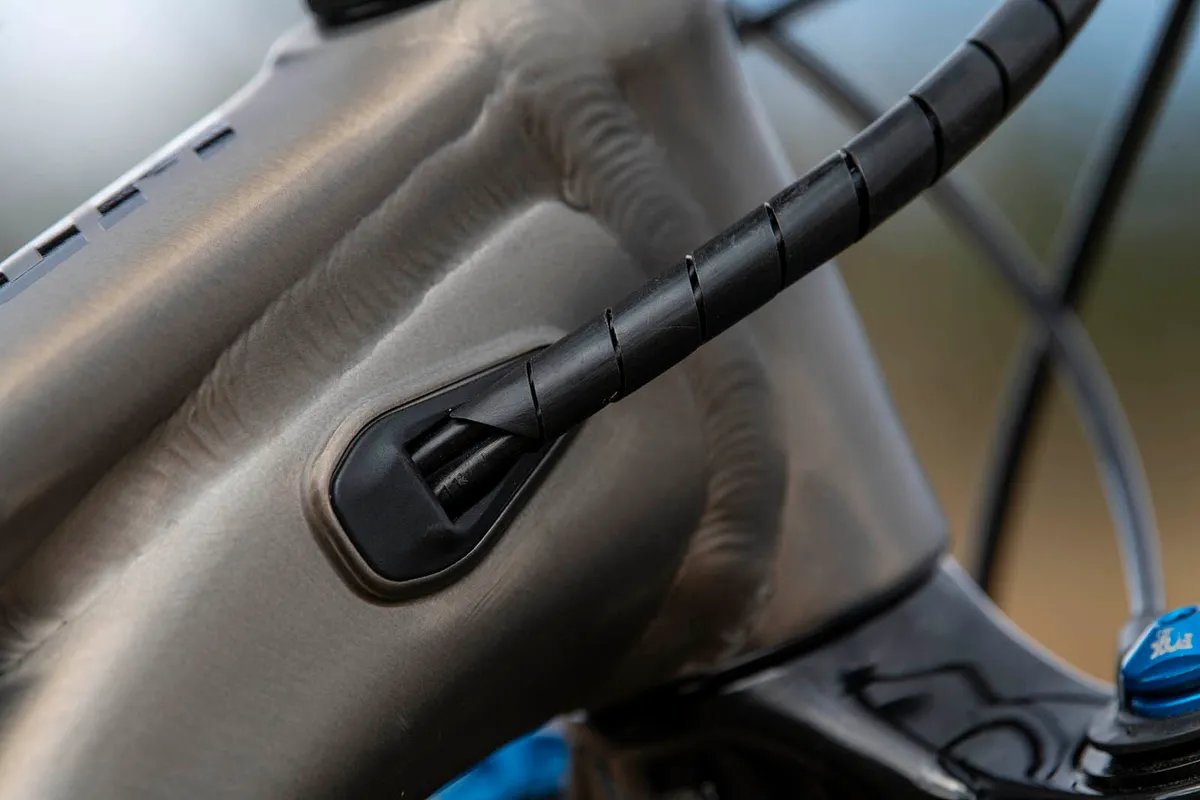
A press-fit bottom bracket won’t be to everyone’s liking but I had zero issues with it during testing.
Scott Ransom 920 geometry
In its current form, the Ransom has been around for a few years now, which may explain why the numbers on my medium frame weren’t quite as stretched-out as some of its counterparts.
I measured the reach at 442mm, which is relatively conservative by current standards. This measurement was taken in the low setting, paired with 29in wheels. It’ll gain around 5mm when using the high-setting with 650b wheels.
That said, the slack 64-degree head angle is identical to the category-leading bikes that the Ransom is up against. The 75.4-degree seat tube could be steeper, but thanks to the TwinLoc system, isn’t as much of an issue as you might think, but more on that later.
The 440mm chainstays help contribute to a wheelbase of just over 1,220mm which should help with high-speed stability when you get the Ransom moving.
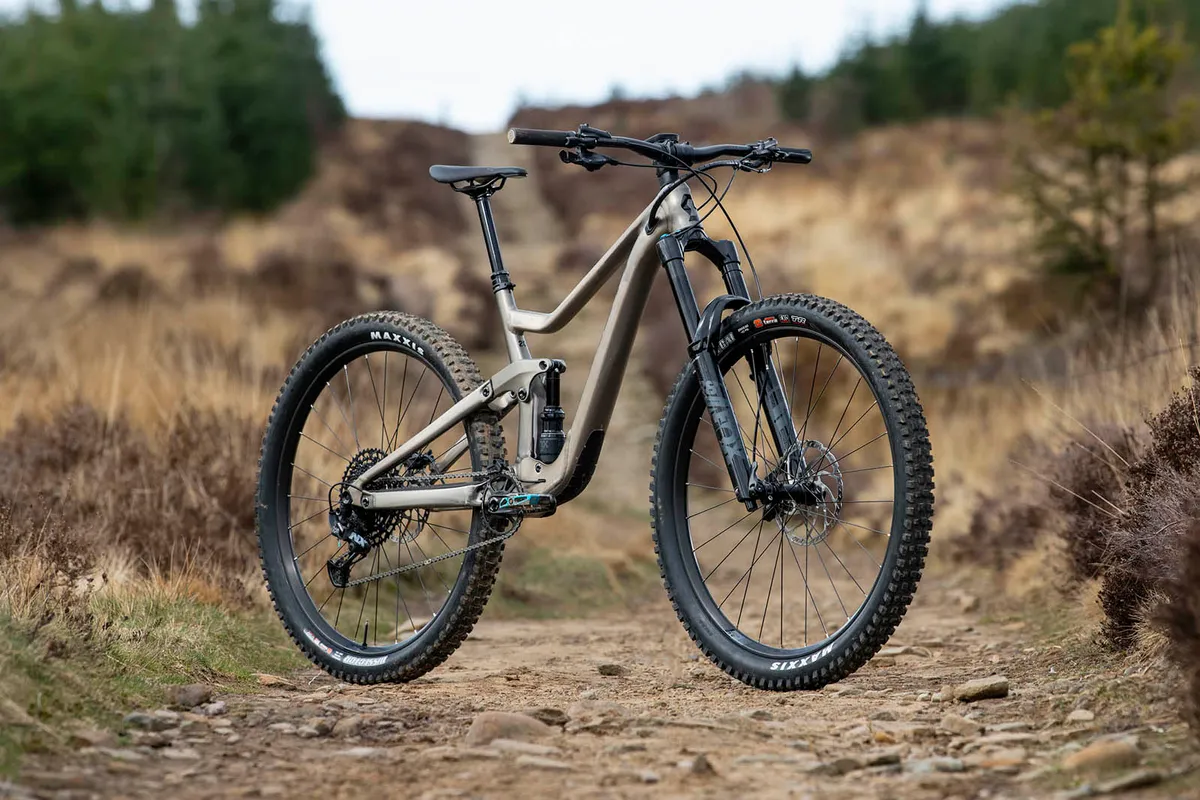
At 355mm (with 22mm of bottom bracket drop), the bottom bracket does sit quite high off the ground.
There are four Ransom frame sizes to choose from, ranging from small to extra-large and thanks to the adjustable geometry, all frames work with either 650b (in the high setting) or 29in wheels (in the low setting).
| | S | M | L | XL |
|---|---|---|---|---|
| Seat angle (degrees) | 75 | 75 | 75 | 75 |
| Head angle (degrees) | 64.5 | 64.5 | 64.5 | 64.5 |
| Chainstay (cm) | 43.79 | 43.79 | 43.79 | 43.79 |
| Seat tube (cm) | 42 | 44 | 47 | 50 |
| Top tube (cm) | 57.71 | 60.42 | 63.47 | 67.13 |
| Head tube (cm) | 10 | 10 | 11.5 | 13 |
| Trail (cm) | 12.25 | 12.25 | 12.25 | 12.25 |
| Bottom bracket drop (cm) | 2.2 | 2.2 | 2.2 | 2.2 |
| Bottom bracket height (cm) | 35.35 | 35.35 | 35.35 | 35.35 |
| Wheelbase (mm) | 1,182.90 | 1,215.90 | 1,249.20 | 1,288.50 |
| Standover (cm) | 74.46 | 74.63 | 76.09 | 77.65 |
| Stack (cm) | 61.36 | 61.36 | 62.76 | 64.13 |
| Reach (cm) | 40.63 | 43.95 | 46.65 | 49.95 |
Scott Ransom 920 specifications
I’ve previously criticised the Ransom when it came to tyre choice, but thankfully, Scott has done a sterling job on its 2021 bikes.
Up front sits a Maxxis Assegai which uses the 3C MaxxTerra compound and EXO casing, while at the rear there’s a faster rolling Maxxis Dissector that also uses the same rubber compound, but this time comes in the tougher EXO+ casing which should offer a bit more in the way of protection against pesky pinch flats. Both tyres are a plump 2.6in wide.
Accompanying the Fox shock at the rear is a 38 Performance level fork up front. The stout, 38mm chassis is fitted with the brand’s cheaper but still impressive GRIP damper, which is smooth but doesn’t offer anywhere near the same level of adjustment found on the GRIP2 damper used in more expensive Fox forks.
Considering the price, the full SRAM NX Eagle transmission doesn’t exactly scream value for money. While it’s still a reliable, smooth shifting transmission, I’d expect to see the likes of SRAM GX Eagle.
It’s not that NX Eagle is bad by any stretch, but the 11-50t cassette doesn’t offer quite the same range as the 10-52t cassette found in the GX Eagle group, and it’s quite a bit heavier too.
While you could argue that it would be possible to view the Shimano brakes in the same vein, I’d disagree. They might not be the all-singing, all-dancing SLX or XT versions found on similarly priced bikes, but the Deore M6120s are formidable stoppers with a light touch and impressive power when the four-piston calipers clamp tightly on the discs.
Scott’s in-house Syncros brand provides the wheels, bar, stem, saddle, dropper post and grips and it’s all well made, decent kit. Be warned, though, the grips are really thin and not very forgiving, but changing them isn’t easy due to the integrated dropper post remote/lockring. Check out our best mountain bike grips list for some suggestions.
All in, my medium Ransom 920 weighed 15.35kg.
Scott Ransom 920 ride impressions
I spent a decent amount of time aboard the Ransom 920, riding it in everything from slow-going, muddy days in the freezing rain to bone dry, super-fast conditions where you don’t even need to point a hose at the bike when you’re finished.
Suspension set-up on the Scott wasn’t as straightforward as it could have been (I’ll expand on this later) and unlike some bikes, I found myself fettling with the settings depending on where I was riding.
The trails I rode varied quite a bit, ranging from steep, rutted, almost totally natural terrain that offers more than enough in the way of slippery roots and awkward technical challenges, to the high speeds, fast jumps and lengthy rock sections of BikePark Wales.
This variety enabled me to get a good handle on how the bike behaved when faced with all sorts of different tracks, highlighting where it might struggle, but also where it might shine.
Scott Ransom 920 climbing performance
Thanks to the impressive TwinLoc system, the Ransom 920 is an impressive climber. Granted, not everyone will like how busy the additional levers and cables make the handlebar, and yes, it will take a little bit of time to get accustomed to where the levers are positioned, but it doesn’t take too long to get used to this setup.
In fact, it only took me a couple of rides until I was consistently jabbing the correct lever at the correct time without even having to think about it.
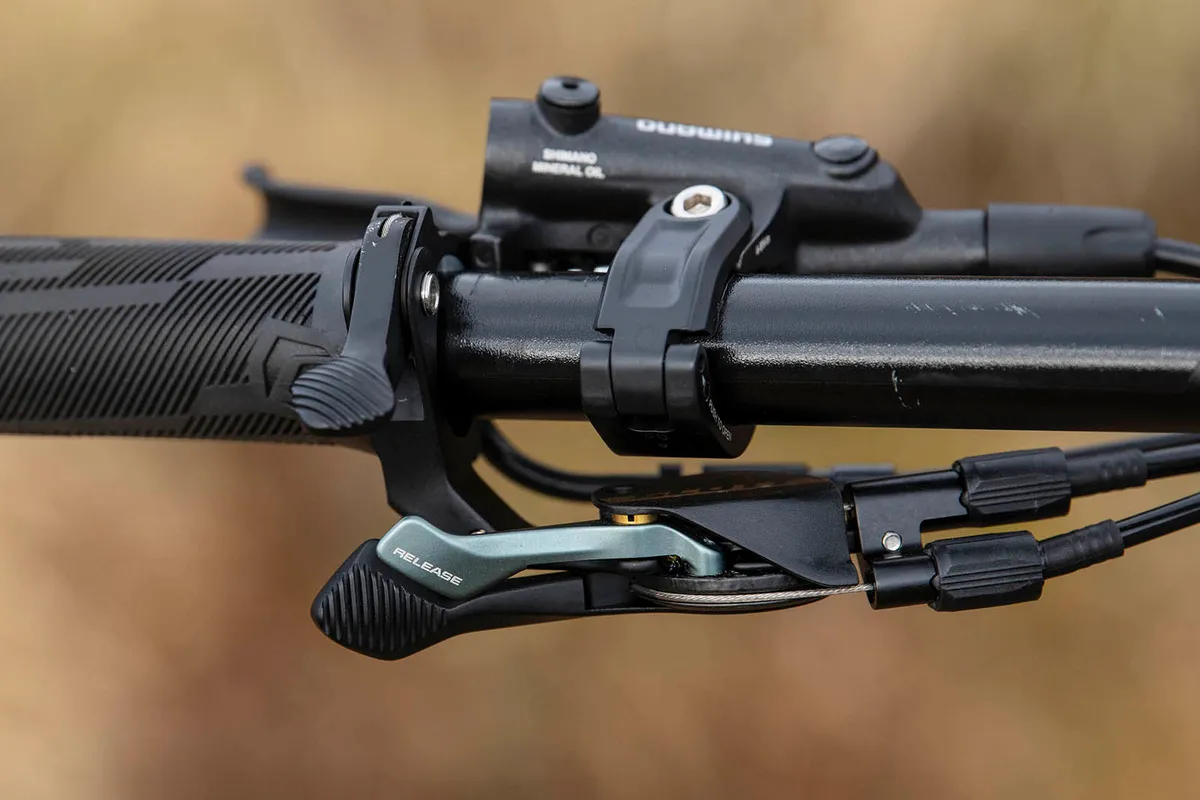
In use, it’s this system that helps the Ransom feel so easy-going uphill. In ‘Descend’ mode, there’s some unwanted suspension when pedalling seated and on steeper inclines, it’s clear the seat angle could be steeper, but push the lever on the TwinLoc remote and actuate ‘Traction’ mode, and the Ransom instantly picks up its game.
With travel effectively limited to 120mm and more in the way of support through the back end of the bike, even on steeper pitches, the Ransom is less inclined to sink into its travel. This means, with more support through the suspension, the bike doesn’t pitch back, slackening the seat tube angle any further.
Instead, it’s better maintained and, coupled with the firmer, more efficient power transfer (thanks to the firmer suspension) through to the rear wheel, the Ransom winches up the climbs more eagerly than most.
The full lockout mode is a plus when faced with any long drags on tarmac roads, but I didn’t use it off-road because it wasn’t particularly comfortable when climbing rougher trails and I prefer the fork to sag a little and remain active rather than be locked and fully extended. It’s still handy to have, though.
Scott Ransom 920 descending performance
The Ransom’s shape feels decent enough from the get-go and easy to get along with. It might not be the roomiest bike when stood up and out of the saddle, but for me at 172cm / 5ft 8in, it never felt cramped or uncomfortable, though a touch more reach wouldn’t go amiss.
The Fox 38 feels well-controlled and smooth when tackling repeated hits and there’s a solid, reassuringly accurate feel through the bar as you navigate chunky, awkward sections of trail.
At higher speeds when slamming the Ransom 920 through the turns, it can start to feel a little imbalanced front to rear. While the supple back end of the bike tracks the terrain well, it lacks support through the mid-stroke. This means, although it’s great at eking out traction through loose turns, when you do try to load the bike hard and spring from one turn to the next, the shock will sink through its stroke a little too easily.
This eagerness to dip further through the travel at the rear when compared to the front of the bike can at times quickly rake out the front end, making it hard to maintain traction through the front tyre and feel a little unpredictable from time to time. It does however mean that the tall bottom bracket goes largely unnoticed when cornering.
It’s a similar story when it comes to tackling high-speed, drop-riddled sections of twisty trail where the imbalance between the front and rear of the bike leaves things feeling rather twitchy through the bar at times, and requires more rider input to keep the bike exactly where you want it to be.
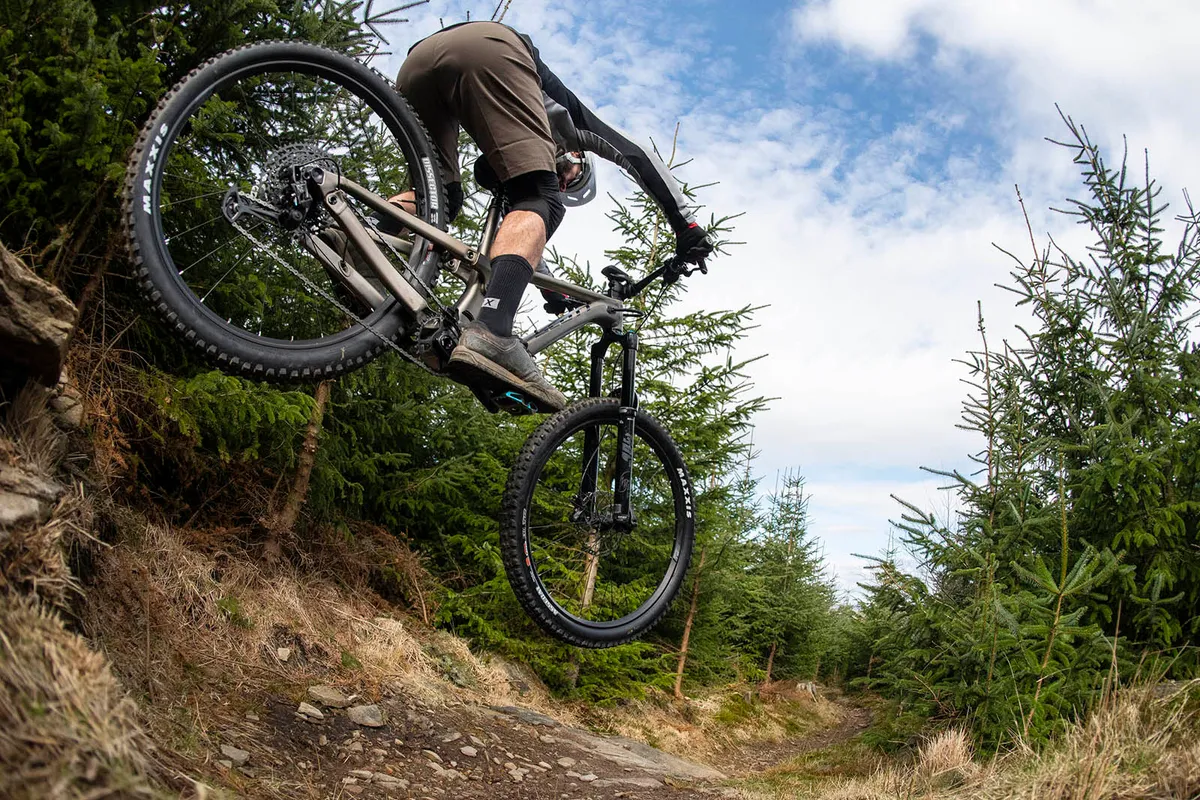
In a bid to rectify this, I tinkered a little with settings and pressures in both the shock and fork. After decreasing the sag in the rear shock to close to 25 per cent (from 30 per cent), and both increasing the sag in the fork and removing a volume spacer, things did improve, but I never felt like I could properly perfect the setup.
And while some settings seemed to work well for some terrain, they didn’t work as well when riding other types. In the end, running a little less sag in the shock and a little less pressure in the fork seemed like the best compromise.
That said, get the Ransom pointing down something straighter, steeper and rougher and it really starts to come into its own thanks to the supple back end.
When things get rough and rowdy, the Ransom manages to claw back some of that confidence while the forgiving nature of the back end soaks up the really heavy hits, boosting composure and managing to deal with the biggest compressions with enough progression to avoid any harsh bottoming out.
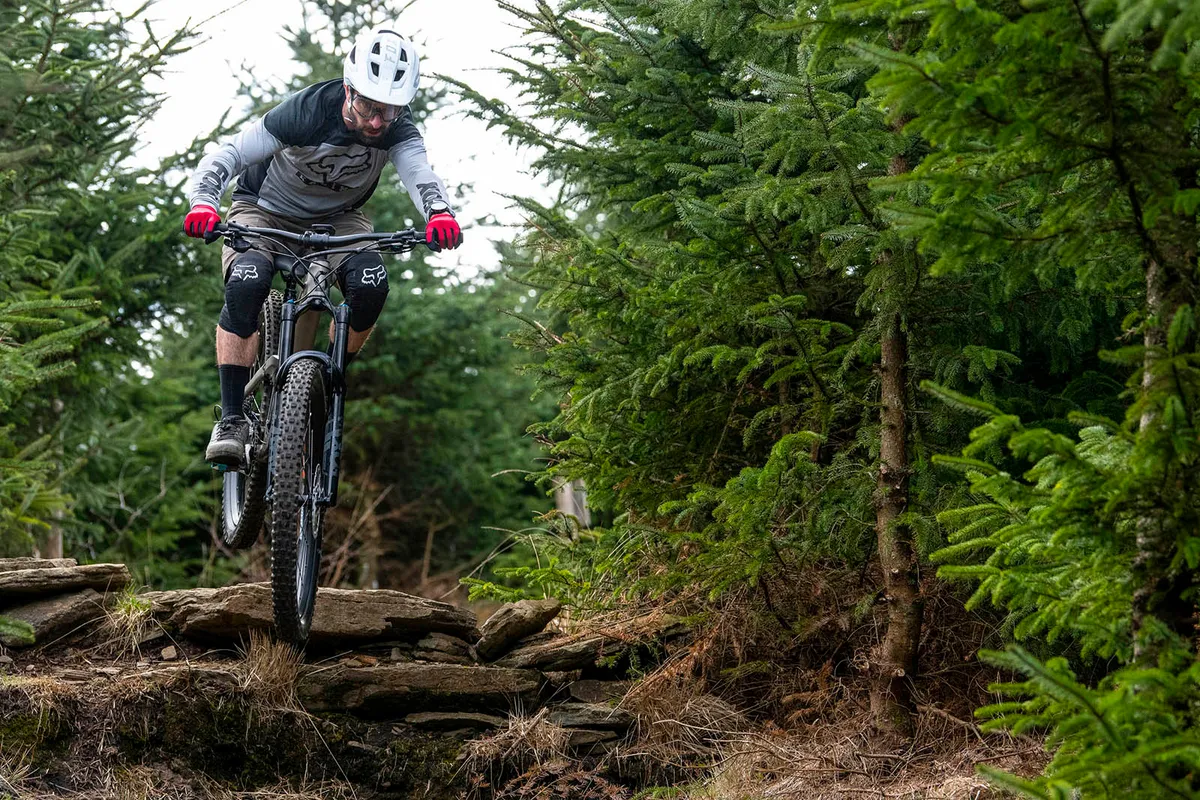
Overall, the Ransom 920 is somewhat a bike of two halves.
While the lack of mid-stroke support through the rear end means the bike doesn’t feel as well-balanced as it could when pumping and pushing through undulating terrain or high-load turns, it’s what helps it eat up the chatter and chunder when the bumps come thick and fast on steeper sections of trail.
And while the spec is okay, I’d expect a few upgrades to the drivetrain considering the asking price.
Scott Ransom 920 bottom line
Scott’s Ransom 920 is a sleek looking machine but its geometry could be improved upon and its value isn’t the best when compared to other similarly priced bikes.
While it climbs well thanks to the TwinLoc travel adjust system, the lack of mid-stroke support at the rear can, at times, make it a little nervous when really pushing on, compared to the best on the market.
Get it pointed down something steep and rough, though, and it really does come into its own.
Considering the price, I’d hope to see GX Eagle over NX Eagle, but it’s great to see some sorted tyres from Maxxis and Shimano’s punchy four-piston Deore brakes.
Thanks to…
A massive thank-you to BikePark Wales for granting us access to its trails despite the bike park being closed to the public.
Cheers also to Fox clothing for sorting the kit for the photo and video shoots and Garmin for sorting us out with bike computers to log the many miles of testing.
And not forgetting Muc-Off, for its help keeping the bikes washed and lubed throughout testing.
The contenders | Enduro Bike of the Year
With 150mm to 180mm of travel, enduro bikes are designed to be hurled down the roughest downhill tracks but still be pedalled back to the top. The best enduro bikes are still fun when riding less full-on terrain, too.
The following bikes were shortlisted for our Enduro Bike of the Year award, with a price range of £3,450 to £4,198.
- Cotic RocketMAX Gen3 Silver SLX
- Kona Process 153 DL 29
- Nukeproof Mega 290 Pro
- Scott Ransom 920
- Trek Slash 8 (winner)
- Vitus Sommet 29 CRX
- Whyte G-180 RS 29er V1
- YT Capra Shred 27.5
Product
| Brand | scott |
| Price | 6900.00 AUD,3999.00 EUR,3899.00 GBP,4000.00 USD |
| Weight | 15.3500, KILOGRAM (L) - |
Features
| Fork | Fox 38 Performance GRIP, with 170mm of travel |
| br_stem | Syncros XM1.5, 45mm |
| br_chain | SRAM NX Eagle |
| br_frame | Ransom Alloy SL 6011 frame, with 170mm (6.7in) of travel |
| Tyres | Maxxis Assegai 3C MaxxTerra EXO 29x2.6in (f) and Maxxis Dissector 3C MaxxTerra EXO+ 29x2.6in (r) |
| br_brakes | Shimano Deore M6120 (203mm/180mm rotors) |
| br_cranks | SRAM NX Eagle with Scott chainguide |
| br_saddle | Syncros Kaslo |
| br_wheels | Syncros Revelstoke 2.5 |
| br_headset | Syncros Pro Pressfit |
| br_shifter | SRAM NX Eagle |
| br_cassette | SRAM NX Eagle |
| br_seatpost | Syncros Duncan 2.0, 150mm |
| br_gripsTape | Syncros |
| br_handlebar | Syncros Hixon 1.5, 800mm |
| br_rearShock | Fox NUDE T EVOL |
| br_bottomBracket | SRAM DUB Press Fit |
| br_availableSizes | S, M, L, XL |
| br_rearDerailleur | SRAM NX Eagle |
